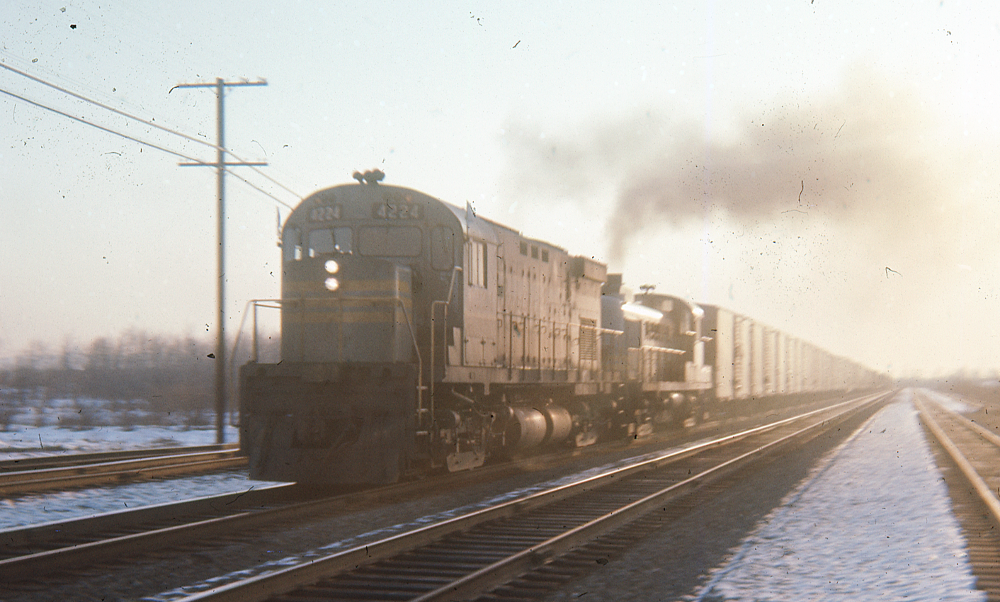These images and data all come from an undated booklet I received from GM EMD in the late 1960s. You can find other illustrations from this set by selecting the 'Railway Technology' link to the right.
This second generation of diesel-electric technology reflected US and Canadian railways' general preference for higher horsepower 6-axle units in order to pull longer and heavier trains. The following 4-axle road units were generally preferred for secondary lines.
As always, there were notable exceptions to these generalizations - particularly in later years as new anti-wheelslip technology helped 4-axle units maintain their footing while starting heavier trains.
New switcher locomotives were less in demand during this era. As locomotive consists of 5 or 6 first generation road locomotives were replaced by higher horsepower units, the former began to replace first generation switchers in yard service.
Some railways altered their old first generation road power for efficient flat yard or hump yard service through regearing ... and/or connecting a regular unit (sometimes known as a 'cow') to a cut-down yard slug (sometimes known as a 'calf'').
... The slug was generally a first generation road unit with its diesel engine, generator and original hood removed. The slug's traction motors efficiently used the surplus electricity produced in this type of service by the regular unit's generator.
Watching trackside in Montreal during the introduction of second generation freight power, the novelty of larger, more powerful units pulling longer trains was not the first thing which came to mind. Instead, what was notable was the 'snub nose' design of the new units.
... A decade or so later, working primarily with the new unit design in Schreiber, it was quite a different experience to get the odd GP9 on the Paper Train. The (short) high hood blocked out a very large area of the forward field of vision to which one was accustomed.
For people interested in understanding 'the human experience' of steam railroading, probably spending some time on CNR first generation roadswitchers - operating long hood forward to maintain the traditional crew collision protection - would have been quite revealing. That arrangement would have simulated very well the experience of looking down the 'barrel' of the boiler in front as one tried to spot signals, switchpoints and obstructions on the track ahead.
A westbound at the old Lachine station in the early 1960s.
This location was near the intersection of today's 32nd Avenue and Rue Victoria.
More or less, the old GTR/CNR main line became Rue Victoria.
This location was near the intersection of today's 32nd Avenue and Rue Victoria.
More or less, the old GTR/CNR main line became Rue Victoria.
Here is an early morning image of a westbound at Grovehill - taken during our Easter school holidays.
Grovehill was a station for commuters, located at the north end of 40th Avenue, Lachine.
















